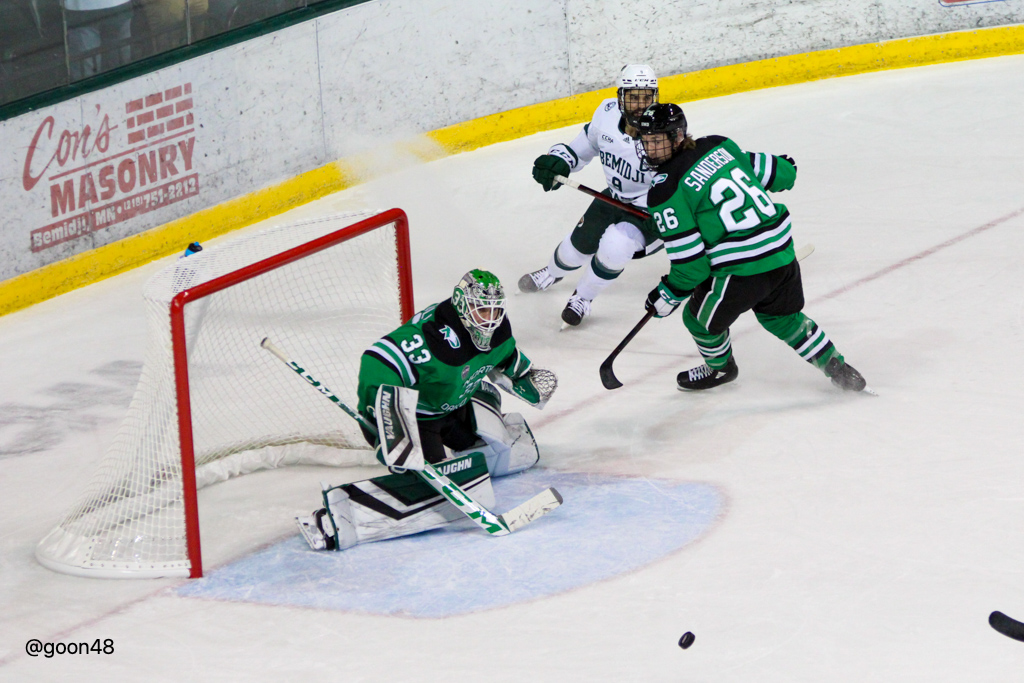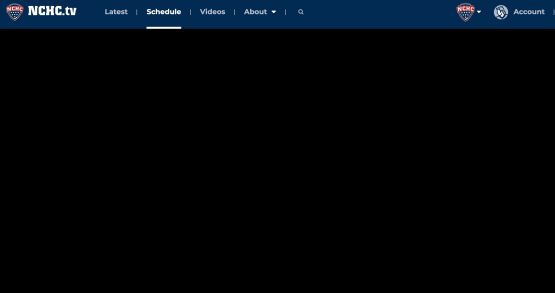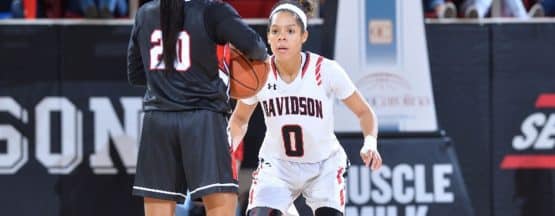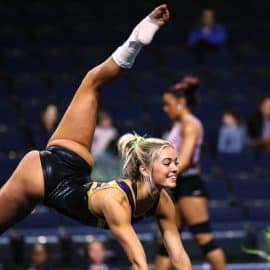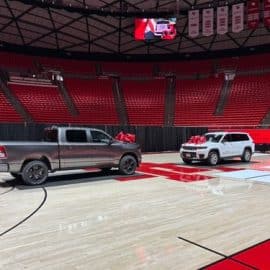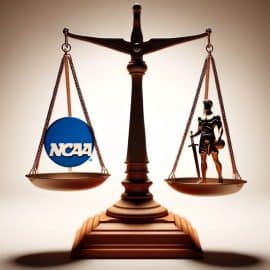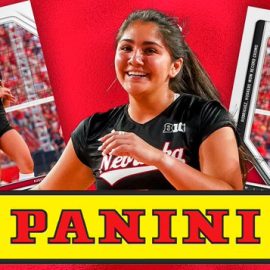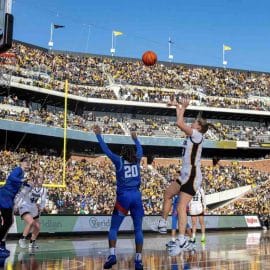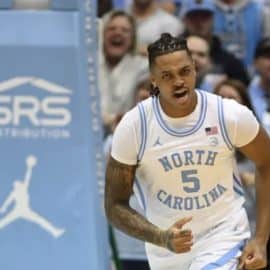Back in November of 2017, I defiled an NCHC member school for its substandard webcast quality. You can see a few of the samples here. This wasn’t an isolated incident. There were others.
Most of these points are still valid today.
First, covering UND sports is a privilege, and I am thankful for this. It may have spoiled me. UND has fantastic facilities with all of the bells and whistles. When the UND hockey team travels to other schools in the conference, the quality of some of the other school’s NCHC.TV broadcasts can be a bit underwhelming. In layperson’s terms, their broadcasts are unwatchable. There are still a couple of schools that fall into this category.
According to a source, after the November 12 game between Miami University and UND (in Oxford, OH), the league sent out a memo instructing member schools that there would be a minimum standard for NCHC.TV. From what I have seen, their broadcast have been better. Not great, but better.
Yes, UND fans have many things to be thankful for, some of the other schools in the conference, not so much.
Outside of the CBSSN on-air staff, Midco’s on-air staff is second to none. They produce the best broadcasts in the NCHC. UND hockey’s play-by-play Alex Heinert is very well prepared and does a great job calling the games from the press box. His color analyst Jake Brandt has done a good job and grown into his role. This season, Heinert joined the CBSSN broadcast crew.
Not All Webcasts are Equal
This past weekend, while I was sitting in the Ralph Engelstad press box before UND’s game against SCSU, I was watching DU and Miami play on NCHC.TV when all of a sudden the webcast went to a black screen. The webcast was out for 4-5 minutes before the game returned to my computer screen, that’s unacceptable. It happened on Friday and Saturday night. You can see the screenshot below.
The NCHC is a first-class league, and I think there needs to be a minimum standard if schools are going to charge a nominal fee for people to watch their broadcasts.
After Further Review
We’ve covered the broadcast end of this. Last Weekend, Bruce Ciskie tweeted this.
These things are all being addressed in the blog.
9:30 was the unofficial total time for the four video reviews tonight.
Nine minutes and thirty seconds to sit there, and on one of the plays I had no flipping clue what they were looking at.
Unacceptable. https://t.co/NQ4ooWcM4f
— Bruce Ciskie (@BruceCiskie) January 22, 2022
Here’s a great summary from Ciskie’s blog post. These are the points that stood out for me.
There was apparently a monitor somewhere in the press box, but I had no view of it from my vantage point, and I had no ability to 1) find it, or 2) watch it, since I was trying to do a broadcast.
So we waited.
And waited.
And waited.
The four reviews, per our studio producer Tyler Walters back in Duluth, took a combined nine minutes, 30 seconds. That’s nearly ten minutes spent reviewing the four plays in question. The longest review was for Omaha’s disallowed goal, at over three minutes.
There was, again, no communication from the officials — or the visiting radio guy — to the fans as to what was being reviewed. The referees, who wear microphones, only gave the most basic information, announcing the challenges by UMD and Omaha, then announcing they were reviewing plays for potential major penalties on the other two stoppages. The first major penalty review was on a Loheit check that was called a minor penalty, but there was no information offered on the second review, to the point where I didn’t even know what team may have been going a player short.
And it’s unacceptable.
—SNIP—
One thing is certain: Everyone involved in the replay review system — the on-ice officials, the on-site supervisor, the replay tech, whoever — want the calls to be right. And they’re all going to do their best they can and not cheat the process. Their efforts are appreciated.But it shouldn’t (and, quite frankly, can’t continue to) take this long. Whether it’s a soft time limit, maybe one that depends on the nature of the review, or a more concerted effort by all parties involved to smooth out the process and reach a verdict faster, something has to change.
I am seeing a few things here.
1.) Long reviews because the on-ice officials don’t have the necessary technology. Is it their fault if they don’t have the proper angle or video footage they need to make a correct ruling? These long video reviews are because the on-ice officials don’t have the necessary video to make the correct call. Is it their fault if they don’t have the proper angle or video footage they need to make a correct ruling? Probably not. That’s on the venue and home institution.
2.) Also, It’s not unreasonable for the people calling the game to have access to video during the game. Again, The Ralph has televisions in the press box, and the media can view the video feed from MIDCO and CBSSN. For the most part, we’ve been able to see a lot of what the on-ice officials are reviewing, or have an idea of what they’re reviewing. Yes, again, media that covers UND hockey are fortunate to be in a world-class arena.
In a Perfect World
While I doubt the NCAA can mandate this, Division I college hockey facilities should have enough cameras and technology to allow the on-ice official to make the appropriate calls. Second, the press box should have the proper technology to allow the media members and stats crews to do their jobs, especially radio and television play-by-play media. It seems reasonable.
Finally, all NCHC broadcasts should have adequate replays for both the opponents and the home team. You’re selling a product to league customers, and the conference schools need to be mindful of that. Previously, an NCHC school didn’t show replays after the opponent’s goals. After the opponents scored, the video immediately went to a Tiger head on the screen. That’s unacceptable. This same institution recently opened a shiny new arena and still has a webcast that needs improvement. Yes, this sounds petty, but when fans are paying for a product, it needs to meet a higher standard. Good enough, isn’t good enough. The argument that we’re just lucky to be able to watch the game in some form isn’t acceptable.
We don’t want to see any more tweets like this.
No video replay in the arena.
No explanation from refs with mics.
I feel for the fans watching in the stands, or even the poor radio guy who can't leave his seat to find a replay monitor.
I feel for the coaches who had to tap me on the shoulder and ask where I found a monitor. https://t.co/FsC1Q8F09F
— Matt Wellens (@mattwellens) January 22, 2022
Add The Sports Daily to your Google News Feed!
